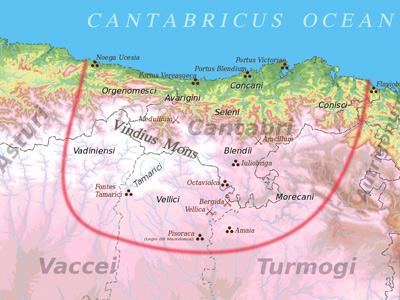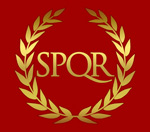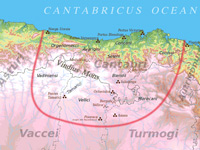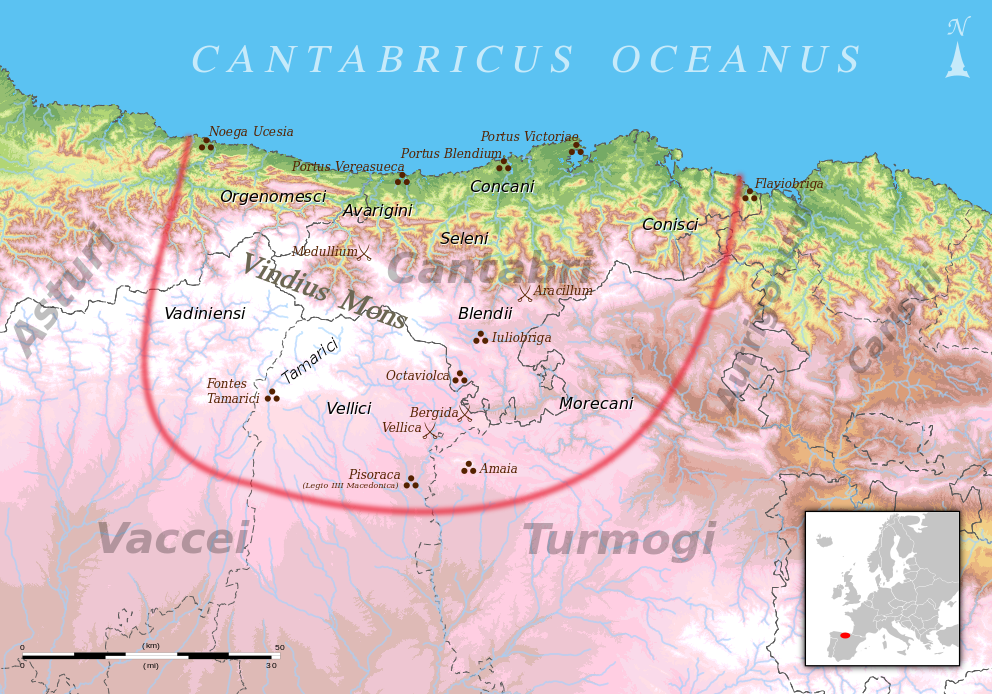Cantabrian Wars (29–19 BC)

End of the Conflict
In this conflict, unusually, the Romans chose not to take prisoners. Moreover, there was a tradition among the Cantabri of preferring suicide to slavery. They did this by sword, by fire, or, primarily, by poisoning themselves with potions made for the purpose. According to Silius Italicus they used a concoction made from the seeds of the yew tree, a plant with mythic significance for the Celts. Strabo said that they belittled death and pain, to the point of singing hymns of victory while being crucified. For them, according to Strabo, to die as soldiers and free men was a victory.
The major fighting was completed in 19 BC, although there were minor rebellions until 16 BC. Rome, as was their practice with other territories, began to impose their reforms. Despite the mass deaths, local resistance was such that the Romans The Roman Empire was the post-Republican period of ancient Rome. As a polity, it included large territorial holdings around the Mediterranean Sea in Europe, North Africa, and Western Asia, and was ruled by emperors. The first two centuries of the Roman Empire saw a period of unprecedented stability and prosperity known as the Pax Romana ('Roman Peace'). The Empire was later ruled by multiple emperors who shared control over the Western Roman Empire and the Eastern Roman Empire. had to station two legions (X Gemina and IIII Macedonica) there for seventy more years.
The Roman Empire was the post-Republican period of ancient Rome. As a polity, it included large territorial holdings around the Mediterranean Sea in Europe, North Africa, and Western Asia, and was ruled by emperors. The first two centuries of the Roman Empire saw a period of unprecedented stability and prosperity known as the Pax Romana ('Roman Peace'). The Empire was later ruled by multiple emperors who shared control over the Western Roman Empire and the Eastern Roman Empire. had to station two legions (X Gemina and IIII Macedonica) there for seventy more years.
Through the Cantabrian War and the surrender of the Astures to Rome (it would be inexact to state that the Cantabri ever surrendered; Augustus refused the common victory celebration in his return to Rome), the Roman legions adopted from them the solar symbol of twin crosses and lunar symbols, such as the Cantabri lábaro. They would still be carrying this standard 300 years later. The Roman army also copied from the Cantabri the cavalry tactics circulus cantabricus and cantabricus impetus.
HISTORY

RESOURCES
This article uses material from the Wikipedia article "Cantabrian Wars", which is released under the Creative Commons Attribution-Share-Alike License 3.0.
© Stories Preschool. All Rights Reserved.










